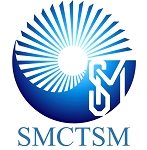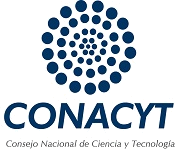Elaboration of a snack from nopal obtained by osmotic dehydration
Keywords:
Sweet snack, cactus, osmotic dehydration, drying.Abstract
A snack from cactus was prepared by osmotic dehydration. The process of osmotic dehydration was performed with a cactus relationship: syrup sucrose 1:2, temperature (40, 60 and 80 ° C), time (6, 8 and 10 h) and osmotic concentration (50, 60 and 80 ° Brix) were evaluated under Box-Behnken experimental design. The optimum process conditions were: osmotic solution of 50 °Brix, temperature of 80 °C and 6 h immersion in osmotic solution, obtaining the snack with a final moisture content of 40.5%. The osmotic dehydration product was dried at 62 °C for 3 h, having a final moisture content of 8.5% and water activity of 0.696.References
M.A. Nuñez-López, O. Paredes-López, R. Reynoso-Camacho. Functional and hypoglycemic properties of nopal cladodes (O. ficus-indica) at different maturity stages using in Vitro and in Vivo tests. J Agric Food Chem 61, 10981 (2013). DOI: 10.1021/jf403834x
SIAP. Servicio de Información Agroalimentaria y Pesquera. Mexico. (2014). http://www.siap.gob.mx/cierre-de-la-produccion-agricola-por-estado/
USDA. United State Department of Agriculture. National Agricultural Library. National Nutrient Database for Standard Reference (2014). https://ndb.nal.usda.gov/ndb/foods/show/3573?fgcd=&manu=&lfacet=&format=&count=&max=35&offset=&sort=&qlookup=nopal
L. Santos-Zea, J.A. Gutiérrez-Uribe, S.O. Serna-Saldivar. Comparative analyses of total phenols, Antioxidant activity, and flavonol glycoside profile of cladode flours from different varieties of Opuntia spp. J Agric Food Chem 59, 7054 (2011). DOI: 10.1021/jf200944y
S. Rodríguez-González, H.E. Martínez-Flores, C.K. Chávez-Moreno, L.I. Macías-Rodríguez, E. Zavala-Mendoza, M.G. Garnica-Romo, L. Chacón-García. Extraction and characterization of mucilage from wild species of opuntia. J Food Proc Eng 37, 285 (2014). DOI: 10.1111/jfpe.12084
S. Devahastin, Niamnuy C. Modelling quality changes of fruits and vegetables during drying: a review. Int J Food Sci Techn 45, 1755 (2010). DOI: 10.1111/j.1365-2621.2010.02352.x
F. Gómez, M. Igual, M.J. Pagán, M.M. Camacho. Changes in the microbiological and physicochemical quality during storage of osmotically dehydrated strawberry jam stabilized with plant extracts. Cambios en la calidad microbiológica y fisicoquímica durante el almacenamiento de mermelada de fresa deshidratada osmóticamente estabilizada con extractos vegetales. CyTA J Food 11, 248 (2013). DOI:10.1080/19476337.2012.730553
L. M. Pereira, C.C. Ferrari, S.D.S. Mastrantonio, A.C.C. Rodrigues, M.D. Hubinger. Kinetic Aspects, Texture, and Color Evaluation of Some Tropical Fruits during Osmotic Dehydration. Drying Technol 24, 475 (2006). DOI:10.1080/07373930600611968
M.E. Rosas Mendoza, J.L. Fernandez Muñoz. FTIR aplicada durante la deshidratación osmótica de mango Ataulfo (Magnífera indica L.). Superficies y Vacío 25, 8 (2012). http://smcsyv.fis.cinvestav.mx/supyvac/25_1/SV2510812.pdf
L. Ramallo, R. Mascheroni, Rate of water loss and sugar uptake during the osmotic dehydration of pineapple. Braz Arch Biol Techn 48, 761 (2005). http://www.scielo.br/pdf/babt/v48n5/26612.pdf
A.K. Yadav y S.V. Singh. Osmotic dehydration of fruits and vegetables: a review. J Food Sci Techn 51, 1654 (2014). DOI: 10.1007/s13197-012-0659-2
S. Hatem, A. Hesham, T. Mostafa, H. Gamal. Osmotic dehydration of banana rings and tomato halves. J Amer Sci 6, 383 (2010). http://www.jofamericanscience.org/journals/am-sci/am0609/44_3431am0609_383_390.pdf
A.M. Sereno, R. Moreira, E. Martínez. Mass transfer coefficients during osmotic dehydration of apple in single and combined aqueous solutions of sugar and salt. J Food Eng 47, 43 (2001). DOI:10.1016/S0260-8774(00)00098-4
M.N. Islam, J.N. Flink. Dehydration of potato II. Osmotic concentration and its effect on air drying behaviour. Int J Food Sci Techn 17, 387 (1982). DOI: 10.1111/j.1365-2621.1982.tb00194.x
Y. Choi, M.R. Okos. Effects of temperature and composition on the thermal properties of foods. In: Food Engineering and Process Applications, Vol. 1, Transport Phenomena, (eds. M. Le Maguer, P. Jelen. London; New York: Elsevier App. Sci. Pub., 1986). ISBN: 1851660224, 9781851660223
K.M. Clegg. The application of the anthrone reagent to the estimation of starch in cereals. J Sci Food Agric, 7, 40 (1956). DOI: 10.1002/jsfa.2740070108
F.R. Assis, R.M.S.C. Morais, A.M.M.B. Morais. Mass transfer in osmotic dehydration of food products: comparison between mathematical models. Food Eng Rev 8, 116 (2016).
DOI: 10.1007/s12393-015-9123-1
P. Manivannan, M. Rajasimman. Osmotic dehydration of beetroot in salt solution: optimization of parameters through statistical experimental design. Int J Chem Biol Engin 1, 214 (2008). http://oaj.unsri.ac.id/files/waset/v2-1-9-17.pdf
K. Suresh, P. Devi. Optimization of some process variables in mass transfer kinetics of osmotic dehydration of pineapple slices. Int Food Res J 18, 221 (2011). http://www.ifrj.upm.edu.my/18%20(01)%202011/(22)_IFRJ-2010-011_Suresh_India[1].pdf
L. Seguí, P.J. Fito, P. Fito. Understanding osmotic dehydration of tissue structured foods by means of a cellular approach. J Food Eng 110, 240 (2012). DOI: 10.1016/j.jfoodeng.2011.05.012
G. Lombard, J. Oliveira, P. Fito, A. Andrés. Osmotic dehydration of pineapple as a pre-treatment for further drying. J Food Eng 85, 277 (2008). DOI: 10.1016/j.jfoodeng.2007.07.009
S. Del Puerto, S. Seminara, C. Minnaard. Identificación y análisis de los errores cometidos por los alumnos en Estadística Descriptiva. Universidad Nacional de Argentina. Revista Iberoamericana de Educación 43, 4 (2007). https://dialnet.unirioja.es/servlet/articulo?codigo=2316451
Downloads
Published
Issue
Section
License
Copyright (c) 2016 Superficies y Vacío

This work is licensed under a Creative Commons Attribution 4.0 International License.
©2025 by the authors; licensee SMCTSM, Mexico. This article is an open access article distributed under the terms and conditions of the Creative Commons Attribution license (http://creativecommons.org/licenses/by/4.0/).





